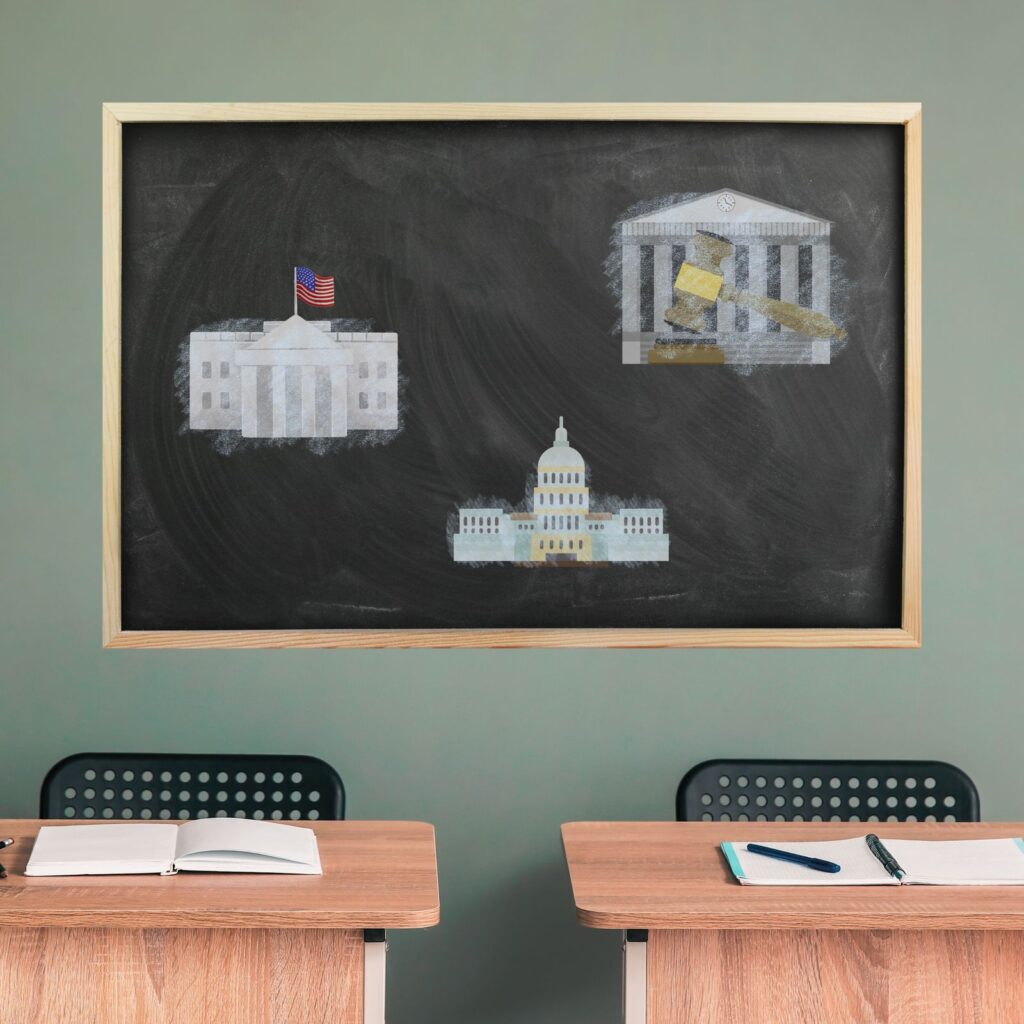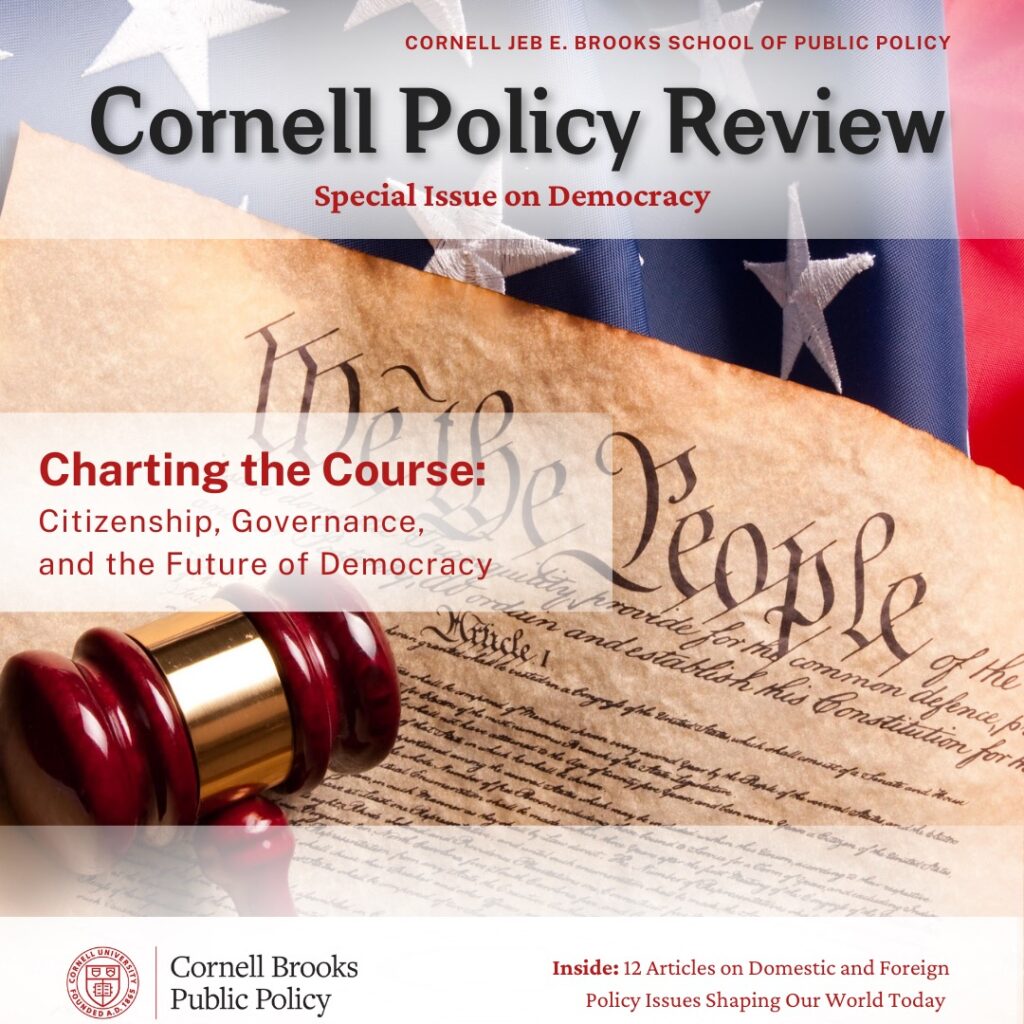By: Katelin Wong
Edited by: Andrew Bongiovanni
Graphic by: Arsh Naseer
Introduction:
The state of American democracy has long relied on ensuring an equal right to vote through the Voting Rights Act of 1965 (VRA). The law’s key provisions include Section 5 and Section 2. Section 5 of the law requires states with a history of discriminatory practices to gain approval from the Department of Justice before changing their voting rules, a system widely known as preclearance.1 Section 2 ensures that people are allowed to sue if existing laws and procedures infringe on their abilities to exercise constitutionally protected rights.2 These provisions worked to protect the equal rights to vote for all eligible citizens until its demise from the Shelby County v. Holder (2013) Supreme Court ruling that encouraged these threats to democracy we see in society today. This ruling triggered a snowball effect, leading to the immediate adoption of new voting laws in “preclearance” states that increased the burden among eligible voters to absorb the indirect costs of the voter registration process—all contributing to the erosion of U.S. democracy.3
Historical Background of Voting Rights Policy:
Initially, the right to vote in the late 1700s was strictly limited to one group only: white male landowners.4 But soon enough, the demands of the people led to the elimination of property qualifications for voting and running for office. However, universal suffrage for white individuals led to voting restrictions imposed on African Americans who wanted to exercise these rights.5 Even with the ratification of the 15th Amendment, which aimed to protect the black vote by prohibiting states from denying the right to vote based on race, many states still found loopholes to discriminate.6 Lengthy residency requirements, poll taxes, literacy requirements, and barriers to registration were all tactics used to reduce the black vote in the South.7 These discriminatory tactics were the ones the Voting Rights Act strived to erase when President Johnson signed it into law in 1965.
Voting rights for all was once a concept that garnered bi-partisan support in Congress. Even after the passage of the Voting Rights Act in 1965, the Act itself was amended multiple times — in 1970, 1975, 1982, 1992, and 2006.8 In these amended versions, Congress agreed to add provisions to protect people in language and minority groups; elderly individuals; and people with disabilities.9 Overall, the Voting Rights Act of 1965 was an Act that was once able to garner support from both parties to expand protections to ensure that voting is easily accessible to those who are eligible to vote. However, as the political climate of Congress shifted, this bipartisan energy declined. The extent of this decline was fully realized when Shelby County v. Holder’s ruling went into full swing.
The Effects of Shelby County Case on Racial Turnout Gaps:
In Shelby County v. Holder, Shelby County in Alabama filed a lawsuit against the Attorney General at the time, Eric Holder, arguing that Sections 5 and 4(b) of the Voting Rights Act of 1965 violate the Tenth Amendment and Article Four of the U.S. Constitution.10 In a 5–4 ruling for Shelby County, the Court eradicated the preclearance formula of the VRA, finding that the formula that determined whether these states required federal review before changing voting procedures is outdated.11 The gutting of these crucial provisions of the VRA weakened its ability to protect the equal right to vote by triggering several states to adopt voter laws that the federal government would have checked through the preclearance provision.12
Due to the policy action that this ruling encouraged, the racial turnout gap grew almost twice as much in the counties that were once subject to preclearance prior.13 With the White-Black turnout gap increasing by 8 percentage points from 2012 to 2022 and the White-Latino turnout gap growing by 4 percentage points over similar time periods, it is evident that the aftermath of the Shelby ruling that gutted preclearance disproportionately affected voters of different racial and ethnic groups. In further support of this argument, a recent research report by the Brennan Center for Justice that looked into how the racial turnout gap has evolved since Shelby found that the racial turnout gap in the 2022 midterms was the largest out of any midterm since the 2006 election.14 However, it is important to note that the problem’s key causes are not limited to just the Shelby ruling; voter suppression is also perpetuated by partisan gerrymandering, purging, and voter intimidation.
Indirect Costs of strict voter ID laws:
Voter ID laws passed since the Shelby ruling have been seen to place significant burdens on racial minorities who may not possess this form of identification. In a study conducted by Kuk, Hajnal, and Lajevardi on the burden voter identification laws have on minority turnout, the difference in difference analysis indicated that as the population of non-whites in a county increased, the negative impacts of these identification laws increased simultaneously, showing that counties with a 75 percent non-white population declined 1.5 more in states that adopted these strict ID laws.15 What’s more, voters in states that have implemented these identification laws may have to pay to obtain the proper documents needed to be able to vote. For example, under a law that was passed in 2021, Wyoming voters without a student or government identification card must present proof of identity to get a free state voter ID, which costs 25 dollars in Wyoming.16 With the cost barriers in place, it is clear that individuals from marginalized and low-income backgrounds will be discouraged from participating in a right that should be guaranteed to them free of cost by the Constitution. These economically disadvantaged individuals have other more pressing worries going on, such as paying their monthly rent, paying for groceries, and keeping the multiple jobs they may have. When it costs to cast your ballot, only those who can afford it can make their voices heard. It is important to note, though, that some states, such as Alabama, can provide these documents (i.e., birth certificates) for free when a voter is trying to obtain their free voter ID card.17
Implications for Democracy:
Being able to register to vote without any barriers is crucial for a healthy, representative democracy. Right now, with the VRA stripped of key provisions that checked the states’ powers in passing new changes to election laws, the state of democracy in the United States has slowly eroded with each strict voter law that has been passed since Shelby. More specifically, research has shown that these voter ID laws, which require identification when a voter shows up at the polls, have created cost burdens for minority voters—thus suppressing their diverse perspectives from the ballot box. While states that implement these strict voter laws argue that these measures are necessary to protect election fraud from occurring, these policies are depressing the minority vote. While voter ID itself in most of these states is free, the documentation that they must present as proof of identity can cost upwards of 20 dollars or more. This may be viewed as a minimal cost for many, but it is certainly not one for those who have to utilize all their earnings to pay for necessities. Some states may have agreements with their public health departments to provide the documents for voter ID cards for free, but this does not appear to be the case for most states. All in all, no one should have to pay for the rights that are claimed to be provided by our state and federal constitutions. These laws continue to perpetuate voter suppression and have heavy implications for the creeping rise in authoritarianism and the erosion of representative democracy in the U.S.
Bibliography
[1] Clayton, Kareem. 2023. “The Voting Rights Act Explained.” Brennan Center for Justice, July 17, 2023. https://www.brennancenter.org/our-work/research-reports/voting-rights-act-explained.
[2] Ibid.
[3] Morris, Kevin, Peter Miller, Coryn G. 2021. “Racial Turnout Gap Grew in Jurisdictions Previously Covered by the Voting Rights Act.” Brennan Center for Justice. https://www.brennancenter.org/our-work/research-reports/racial-turnout-gap-grew-jurisdictions-previously-covered-voting-rights.
[4] Carnegie Corporation of New York. 2019. “Voting Rights: A Short History.” Carnegie Corporation of New York https://www.carnegie.org/our-work/article/voting-rights-timeline/.
[5] Mintz, Steven. “Winning the Vote: A History of Voting Rights.”2024. the Gilder Lehrman Institute of American History. https://www.gilderlehrman.org/history-resources/essays/winning-vote-history-voting-rights.
[6] Ibid.
[7] Ibid.
[8] Garrett, R. Sam. 2023. “The Voting Rights Act: Historical Development and Policy Background.” Congressional Research Service. https://crsreports.congress.gov/product/pdf/R/R47520.
[9] Carnegie Corporation of New York. 2019. “Voting Rights: A Short History.” Carnegie Corporation of New York https://www.carnegie.org/our-work/article/voting-rights-timeline/.
[10] Shelby County v. Holder, 570 US 529 (2013).
[11] Ibid.
[12] Brennan Center for Justice. 2023. “Effects of Shelby County v. Holder on the Voting Rights Act” Brennan Center for Justice. https://www.brennancenter.org/our-work/research-reports/effects-shelby-county-v-holder-voting-rights-act
[13] Gaber, Andrew. 2023. “Pass the John R. Lewis Voting Rights Advancement Act.” Brennan Center for Justice. https://www.brennancenter.org/our-work/research-reports/pass-john-r-lewis-voting-rights-advancement-act.
[14] Morris, Kevin & Coryn G. 2024. “Growing Racial Disparities in Voter Turnout, 2008 – 2022.” Brennan Center for Justice. https://www.brennancenter.org/our-work/research-reports/growing-racial-disparities-voter-turnout-2008-2022.
[15] Kuk, J., Hajnal, Z., & Lajevardi, N. 2020. “A disproportionate burden: strict voter identification laws and minority turnout.” Politics, Groups, Identities. 10(1), 1–9. https://doi.org/10.1080/ 21565503.2020.1773280.
[16] Allen v. Milligan (Formerly Merrill v. Milligan). 2022. Brennan Center for Justice. https://www.brennancenter.org
/our-work/court-cases/allen-v-milligan-formerly-merrill-v-milligan.
[17] Alabama Secretary of State. “How to Get a Free Photo Voter ID Card.” https://www.sos.alabama.gov/alabama-votes/photo-voter-id/obtain-free-photo-voter-id.


